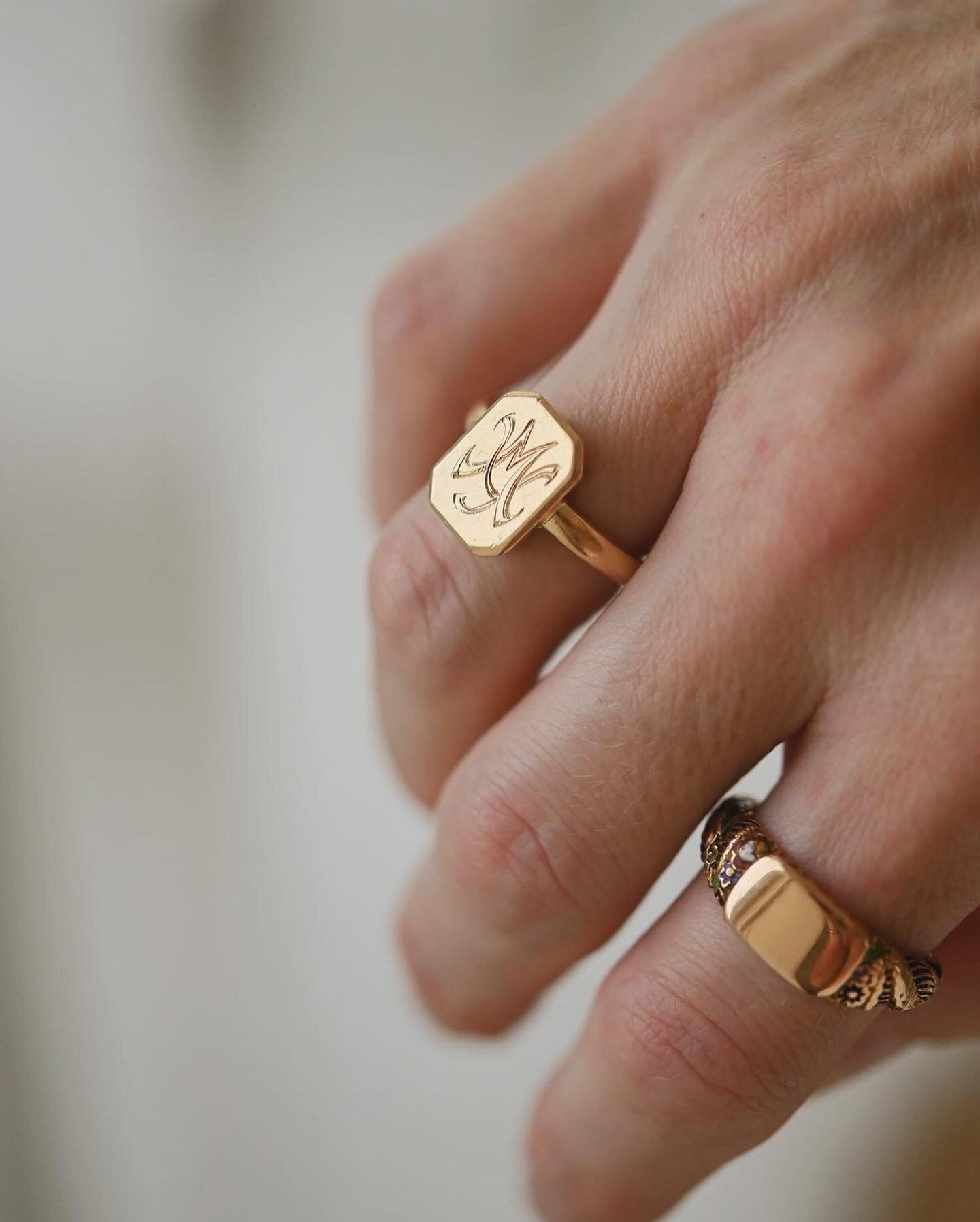 Image 1 of 9
Image 1 of 9

 Image 2 of 9
Image 2 of 9

 Image 3 of 9
Image 3 of 9

 Image 4 of 9
Image 4 of 9

 Image 5 of 9
Image 5 of 9

 Image 6 of 9
Image 6 of 9

 Image 7 of 9
Image 7 of 9

 Image 8 of 9
Image 8 of 9

 Image 9 of 9
Image 9 of 9










Magical Vintage Peach Sapphire Ring 14K Gold 1950s
This is a lab grown 1950s padparadscha sapphire. The history of lab grown sapphires began in the late 1800s when the French chemists Auguste Verneuil and Fremy after many years of work finally understood the ruby synthesis.
In 1902, Vernueil realized that fusing powdered alumina and chromium with the oxygen hydrogen torch at 2000 degrees Celsius would produce small particles of synthetic ruby. Next he was capable of creating synthetic ruby in a large enough size to use in jewelry.
Sapphires took him about 8 more years to figure out but in 1909, Vernueil discovered that synthetic sapphires could be created with the addition of iron and titanium.
Over the next twenty years, the methods evolved and grew so popular, that synthetic stones found their way into even the finest of jewelers in the 1920s. Synthetic rubies and sapphires were EVERYWHERE!
The methods has evolved since then, and today the synthetic stones are produced with HPHT: High-pressure high-temperature. This process mimics how earth-mined gemstones are made, but in a fraction of the time. An engineer crafts a liquid compound comprised of gemstone material and carbon, then utilizes the two components of heat and pressure to make a crystal.
The stones are referred to as “synthetic,” but lab-created gemstones are in fact totally real and genuine; just man-made instead of mined from the earth. Lab gemstones are chemically, physically and optically identical to their natural counterparts. They come from the same recipe as those found underground.
This particular synthetic sapphire is just magical! It has the most beautiful peach color which goes under the name padparadscha (the most rare and expensive color of sapphires).
The stone is crystal clear and measures 10x8 mm. It’s set in a super cool mid century (original to the stone) 14K gold setting.
Depending on the light she goes from orange-ish to more pinky peachy.
The ring is Danish and dates to the 1950s. She has full marks for 14K gold and has a beautiful soft brushed finish and the best soft golden color.
Currently a size 6.25 US and sizeable by your local jeweler.
The condition is excellent with normal age related wear.
This is a lab grown 1950s padparadscha sapphire. The history of lab grown sapphires began in the late 1800s when the French chemists Auguste Verneuil and Fremy after many years of work finally understood the ruby synthesis.
In 1902, Vernueil realized that fusing powdered alumina and chromium with the oxygen hydrogen torch at 2000 degrees Celsius would produce small particles of synthetic ruby. Next he was capable of creating synthetic ruby in a large enough size to use in jewelry.
Sapphires took him about 8 more years to figure out but in 1909, Vernueil discovered that synthetic sapphires could be created with the addition of iron and titanium.
Over the next twenty years, the methods evolved and grew so popular, that synthetic stones found their way into even the finest of jewelers in the 1920s. Synthetic rubies and sapphires were EVERYWHERE!
The methods has evolved since then, and today the synthetic stones are produced with HPHT: High-pressure high-temperature. This process mimics how earth-mined gemstones are made, but in a fraction of the time. An engineer crafts a liquid compound comprised of gemstone material and carbon, then utilizes the two components of heat and pressure to make a crystal.
The stones are referred to as “synthetic,” but lab-created gemstones are in fact totally real and genuine; just man-made instead of mined from the earth. Lab gemstones are chemically, physically and optically identical to their natural counterparts. They come from the same recipe as those found underground.
This particular synthetic sapphire is just magical! It has the most beautiful peach color which goes under the name padparadscha (the most rare and expensive color of sapphires).
The stone is crystal clear and measures 10x8 mm. It’s set in a super cool mid century (original to the stone) 14K gold setting.
Depending on the light she goes from orange-ish to more pinky peachy.
The ring is Danish and dates to the 1950s. She has full marks for 14K gold and has a beautiful soft brushed finish and the best soft golden color.
Currently a size 6.25 US and sizeable by your local jeweler.
The condition is excellent with normal age related wear.
This is a lab grown 1950s padparadscha sapphire. The history of lab grown sapphires began in the late 1800s when the French chemists Auguste Verneuil and Fremy after many years of work finally understood the ruby synthesis.
In 1902, Vernueil realized that fusing powdered alumina and chromium with the oxygen hydrogen torch at 2000 degrees Celsius would produce small particles of synthetic ruby. Next he was capable of creating synthetic ruby in a large enough size to use in jewelry.
Sapphires took him about 8 more years to figure out but in 1909, Vernueil discovered that synthetic sapphires could be created with the addition of iron and titanium.
Over the next twenty years, the methods evolved and grew so popular, that synthetic stones found their way into even the finest of jewelers in the 1920s. Synthetic rubies and sapphires were EVERYWHERE!
The methods has evolved since then, and today the synthetic stones are produced with HPHT: High-pressure high-temperature. This process mimics how earth-mined gemstones are made, but in a fraction of the time. An engineer crafts a liquid compound comprised of gemstone material and carbon, then utilizes the two components of heat and pressure to make a crystal.
The stones are referred to as “synthetic,” but lab-created gemstones are in fact totally real and genuine; just man-made instead of mined from the earth. Lab gemstones are chemically, physically and optically identical to their natural counterparts. They come from the same recipe as those found underground.
This particular synthetic sapphire is just magical! It has the most beautiful peach color which goes under the name padparadscha (the most rare and expensive color of sapphires).
The stone is crystal clear and measures 10x8 mm. It’s set in a super cool mid century (original to the stone) 14K gold setting.
Depending on the light she goes from orange-ish to more pinky peachy.
The ring is Danish and dates to the 1950s. She has full marks for 14K gold and has a beautiful soft brushed finish and the best soft golden color.
Currently a size 6.25 US and sizeable by your local jeweler.
The condition is excellent with normal age related wear.





